FAQ Overview
Email
Which email clients do you support?
Meganet supports a wide variety of email clients. Some of the most popular we support are:
- Microsoft Outlook
- Apple Mail
- Mozilla Thunderbird
Additionally, we also support mobile email clients, such as the default mail apps you would find on an Apple or Android mobile device.
Please note, support for third party email clients is limited. Because these programs are not developed and updated by Meganet, we do not have any control over glitches and other bugs that may prevent you from collecting your email.
We highly recommend that customers use the Meganet website to check their email.
Author: Meganet Support
Last update: 2024-10-21 17:43
What are the differences between POP, IMAP, and SMTP?
When setting up email accounts or configuring email clients, you might come across the terms POP, IMAP, and SMTP. These protocols play distinct roles in handling your email. Here's a quick guide to help you understand the differences between them and their specific functions.
1. POP (Post Office Protocol)
What It Does:
POP is used to download emails from a server to your device, typically removing the email from the server once it's been downloaded. It's ideal if you prefer to store emails locally on one device and don't need to access your messages from multiple locations.
How It Works:
- POP3 is the most commonly used version of POP. It connects to the mail server, retrieves your emails, and stores them locally (on your computer or device).
- By default, once the email is downloaded, it is deleted from the server. However, many modern email clients allow you to configure POP to leave a copy on the server for a specific period.
When to Use POP:
- One device access: If you mainly use one device to access your emails and want to store them locally.
- Limited server storage: If your email provider offers limited server storage and you want to free up space by downloading and storing emails locally.
Drawbacks of POP:
- Emails are not synced across devices, so messages read or deleted on one device won’t reflect those actions on another device.
- Once emails are downloaded, they are only accessible on that specific device unless configured otherwise.
2. IMAP (Internet Message Access Protocol)
What It Does:
IMAP is designed to sync emails between the mail server and your devices. Emails remain on the server and are accessed from multiple devices (e.g., phone, tablet, computer). Changes made (reading, deleting, moving) on one device are reflected on all other devices accessing the same account.
How It Works:
- IMAP keeps your email stored on the server and displays a synced copy on your devices.
- Any changes you make (such as marking an email as read or moving it to a different folder) are updated on the server and synchronized across all devices connected to that account.
When to Use IMAP:
- Multiple device access: If you need to access your emails from multiple devices (e.g., smartphone, laptop, desktop) and want everything to stay synchronized.
- Consistent organization: If you prefer that your inbox and folders look the same across all devices.
- Server storage: Your emails stay on the server unless you manually delete them, making IMAP a good choice for those who don't want to store everything locally.
Drawbacks of IMAP:
- Emails take up server storage, which can be an issue if your provider offers limited space.
- Requires an active internet connection to fully interact with your emails (although most clients offer offline access to cached messages).
3. SMTP (Simple Mail Transfer Protocol)
What It Does:
SMTP is the protocol used to send emails. It works in conjunction with either POP or IMAP to handle outgoing messages, making sure that your email gets delivered to the recipient’s mail server.
How It Works:
- When you compose and send an email, SMTP communicates with your email client and the recipient’s email server to deliver the message.
- SMTP only handles outgoing emails—it does not store or download messages, which is why it is often used alongside POP or IMAP to complete the email experience.
When to Use SMTP:
- SMTP is automatically configured in most email clients to send emails. There’s no special need to choose between SMTP and other protocols, as it's a standard for email sending.
Drawbacks of SMTP:
- SMTP does not manage incoming email. You’ll still need POP or IMAP for receiving messages.
Key Differences
| Protocol |
Purpose |
Where Emails Are Stored |
Device Sync |
Best For |
| POP |
Retrieve emails |
Stored on your device |
No |
Single device use, local storage |
| IMAP |
Sync emails |
Stored on server |
Yes |
Multiple device access |
| SMTP |
Send emails |
N/A (outgoing only) |
N/A |
Sending emails |
Summary
- POP is great for people who want to download emails to a single device and store them locally.
- IMAP is ideal for those who need to access emails from multiple devices, keeping everything synchronized across devices.
- SMTP is necessary for sending emails and works in the background with both POP and IMAP.
By understanding the differences between POP, IMAP, and SMTP, you can choose the right setup based on how you manage and access your email.
Author: Meganet Support
Last update: 2024-10-22 14:11
Should I use webmail or an email client?
When it comes to managing your email, you have two main options: using a webmail service (like IMAIL) or an email client (like Microsoft Outlook, Apple Mail, or Thunderbird). Both methods have their pros and cons, and the choice largely depends on how you prefer to access and organize your emails.
Here’s a breakdown to help you decide which is the best option for you.
1. What is Webmail?
Overview:
Webmail is an email service that you access directly through your web browser. Webmail doesn't require you to download or install any software—all you need is an internet connection and a browser.
Pros of Webmail:
- Access Anywhere: You can log into your account from any device with an internet connection and browser. There’s no need for additional software, making it very convenient for accessing email on the go.
- Great storage: Most webmail services come with a large amount of storage.
- No Setup Required: You can start using it immediately without having to configure anything. Just create an account, log in, and you're good to go.
- Cloud-Based Storage: Since all your emails are stored on the provider’s servers, you don't need to worry about losing your emails if your device gets damaged.
- Integration with Other Services: Many webmail services integrate with other online tools, like Google Drive or Microsoft OneDrive, making it easy to share files and collaborate.
Cons of Webmail:
- Requires Internet Connection: You need to be connected to the internet to read and send emails. Without access to the web, you won’t be able to use your email.
- Limited Customization: Webmail interfaces are generally standardized, and customization options are more limited compared to email clients.
- Storage Limits: While most webmail services offer generous storage, if you exceed the limit, you might need to purchase extra space or delete old emails.
2. What is an Email Client?
Overview:
An email client is a software application you install on your computer, tablet, or smartphone to manage your email. Common email clients include Microsoft Outlook, Apple Mail, Thunderbird, and mobile apps for email services. Email clients often use POP or IMAP to retrieve your emails and SMTP to send emails.
Pros of Email Clients:
- Offline Access: One of the biggest advantages is the ability to access your email offline. Once emails are downloaded to your device, you can read, draft, and organize emails without an internet connection.
- More Features and Customization: Email clients often come with advanced features like sorting rules, email filters, folders, and customization options. You can personalize the look, layout, and how emails are handled.
- Multiple Accounts in One Place: If you have several email accounts (work, personal, etc.), email clients make it easy to manage multiple accounts from a single interface.
- Enhanced Security: Email clients often allow you to set up encryption or use digital certificates for enhanced email security, making it a better option for sensitive or confidential communications.
Cons of Email Clients:
- Requires Setup: Unlike webmail, email clients require configuration to work with your email provider. You may need to enter server details (e.g., IMAP, POP, and SMTP settings) and passwords to get started.
- Local Storage: Depending on your settings, emails may be stored locally on your device, which can take up significant storage space, especially if you receive a lot of large attachments.
- Limited Accessibility: If you only download emails to one device, they may not be accessible from other devices unless you use cloud-based sync features (like IMAP).
- Software Updates and Maintenance: You’ll need to regularly update the software to get the latest features and security updates.
3. Key Differences Between Webmail and Email Clients
| Feature |
Webmail |
Email Client |
| Accessibility |
Accessible from any device with internet |
Requires installation on a specific device |
| Offline Access |
No, requires an internet connection |
Yes, emails can be accessed offline |
| Customization |
Limited customization |
Highly customizable |
| Multiple Accounts |
Limited; may require logging in/out |
Can manage multiple accounts in one place |
| Setup Required |
No, just log in through your browser |
Requires configuration and setup |
| Security Features |
Provider-dependent, often basic |
Offers advanced encryption and security |
| Integration |
Integrates well with cloud-based services |
Integrates with local apps and features |
4. When to Use Webmail
- Access from Anywhere: If you travel a lot or switch between multiple devices, webmail is the better choice since you can log in from any internet-enabled device.
- No Hassle: If you prefer a simple, straightforward solution that doesn’t require installation or setup, webmail services like Gmail or Outlook.com offer ease of use.
- Cloud-Based Storage: Webmail is ideal if you don’t want to manage local backups or worry about losing emails stored on your device.
Recommended For:
- Casual users who don’t need advanced features
- People who want to access their email from multiple devices easily
- Users who prefer not to install software
5. When to Use an Email Client
- Offline Access: If you need to access your email even without an internet connection (e.g., when traveling), an email client is a better option since it stores emails locally.
- Advanced Email Management: If you handle a large volume of emails and need tools to organize them (e.g., filtering, folders, rules), an email client offers more robust features.
- Multiple Accounts: If you manage multiple email accounts and want them all in one place, email clients make this much easier than logging in and out of different webmail services.
Recommended For:
- Power users or professionals who handle a lot of emails
- People who need offline access or work in environments with limited connectivity
- Users who want to manage multiple accounts in one interface
Conclusion
Choosing between webmail and an email client depends on your specific needs:
- Use Webmail if you value accessibility, simplicity, and the ability to access your email from any device with an internet connection.
- Use an Email Client if you need offline access, advanced organizational features, or manage multiple email accounts.
By understanding the pros and cons of each, you can make the right choice for your email management needs.
Author: Meganet Support
Last update: 2024-10-22 14:17
Mail Server Settings in Outlook
Mail Server Settings in Microsoft Outlook 365, 2019, 2016
- Open Outlook.
- Click on File in the top left corner.
- Select Account Settings, then click Account Settings again in the drop-down menu.
- Choose the email account you want to update and click Change.
- Under User Information, check your Username:
- If your username is just "myusername," change it to "myusername@meganet.net" for both Incoming and Outgoing mail server settings.
- Scroll down to Server Information and ensure both the Incoming and Outgoing mail servers are:
- Incoming (IMAP or POP3): mail.meganet.net
- Outgoing (SMTP): smtp.meganet.net
- Click Next, then click Finish after Outlook confirms your settings.
Mail Server Settings in Microsoft Outlook 2013
- Open Outlook.
- Click File in the top left corner.
- Select Account Settings, then click Account Settings again.
- Under the Email tab, select your email account and click Change.
- Under Logon Information, ensure your Username is updated:
- Scroll down and verify the Incoming and Outgoing Server Information:
- Incoming (IMAP or POP3): mail.meganet.net
- Outgoing (SMTP): smtp.meganet.net
- Click Next, allow Outlook to test your account settings, then click Finish.
Mail Server Settings in Microsoft Outlook 2010
- Open Outlook.
- Click on the File tab, then click Account Settings > Account Settings again.
- Under the Email tab, select your account and click Change.
- Under Logon Information, ensure your Username is updated:
- If it reads "myusername," append "@meganet.net" to make it "myusername@meganet.net" for both Incoming and Outgoing mail server settings.
- Under Server Information, confirm the following:
- Incoming (IMAP or POP3): mail.meganet.net
- Outgoing (SMTP): smtp.meganet.net
- Click Next, then click Finish once the settings are verified.
Mail Server Settings in Microsoft Outlook 2007
- Open Outlook.
- Click on Tools from the menu bar, then select Account Settings.
- Under the Email tab, select your account and click Change.
- Ensure your Username is updated:
- If it’s listed as "myusername," change it to "myusername@meganet.net" for both Incoming and Outgoing mail servers.
- Check your Server Information:
- Incoming (IMAP or POP3): mail.meganet.net
- Outgoing (SMTP): smtp.meganet.net
- Click Next, then click Finish once the changes are confirmed.
Mail Server Settings in Microsoft Outlook for Mac
- Open Outlook for Mac.
- Go to Tools in the menu, then select Accounts.
- Select your email account in the left panel.
- Under Account Information, ensure your Username is updated:
- If your username reads "myusername," change it to "myusername@meganet.net" for both Incoming and Outgoing mail servers.
- Ensure your Incoming and Outgoing server details are as follows:
- Incoming (IMAP or POP3): mail.meganet.net
- Outgoing (SMTP): smtp.meganet.net
- Close the window, and your changes will be saved automatically.
Author: Meganet Support
Last update: 2024-10-23 13:02
Mail Server Settings in Apple Mail
- Open Apple Mail and go to Mail > Preferences.
- Select the Accounts tab and choose the email account you want to update.
- Click the Server Settings tab.
- Under Username, ensure it reads "myusername@meganet.net" for both Incoming and Outgoing mail servers (append "@meganet.net" if it’s missing).
- For both Incoming and Outgoing mail, ensure the server settings are:
- Incoming (IMAP or POP3): mail.meganet.net
- Outgoing (SMTP): smtp.meganet.net
- Click OK to save your changes.
Author: Meganet Support
Last update: 2024-10-23 13:03
Mail Server Settings in Mozilla Thunderbird
- Open Thunderbird.
- Click the Menu button (three horizontal lines) and select Account Settings.
- Choose your email account from the list on the left.
- Under Server Settings, check your Username:
- Scroll down to Outgoing Server (SMTP) and click Edit.
- Under Username, ensure it reads "myusername@meganet.net" (append "@meganet.net" if it’s missing).
- Ensure your Outgoing SMTP server is set to: smtp.meganet.net.
- Click OK to save your changes.
Author: Meganet Support
Last update: 2024-10-23 13:08
Mail Server Settings on Android Mail
- Open the Mail app on your Android device.
- Go to Settings > Accounts and select your email account.
- Tap Account Settings and go to Incoming settings.
- Check your Username:
- Ensure the Incoming server is set to: mail.meganet.net.
- Go back and select Outgoing settings:
- Check your Username again, and if it’s "myusername," append "@meganet.net" to make it "myusername@meganet.net."
- Ensure the Outgoing server is set to: smtp.meganet.net.
- Tap Done to save your settings.
Author: Meganet Support
Last update: 2024-10-23 13:14
Mail Server Settings on iOS (iPhone, iPad) Mail
- Open Settings on your iPhone or iPad.
- Scroll down and tap Mail, then Accounts.
- Select your email account, then tap Account again.
- Under Username, make sure your username reads "myusername@meganet.net" (if not, append "@meganet.net"). This applies to both Incoming and Outgoing mail servers.
- Tap Outgoing Mail Server (SMTP):
- Tap the Primary Server.
- Check the Username field and append "@meganet.net" if necessary.
- Ensure the Outgoing server is set to: smtp.meganet.net.
- Go back and tap Advanced under Incoming Settings:
- Ensure the Incoming Server is set to: mail.meganet.net.
- Tap Done to save changes.
Author: Meganet Support
Last update: 2024-10-23 13:17
How to Export Your Contacts from IMAIL webmail to SurgeMail
- Log into your IMAIL webmail account.
- Click on the Contacts or Address Book icon in the left navigation pane.
- Look for an Export Contacts option, found in the main toolbar.
- Choose the format for exporting (vCard).

- Click Export Contacts.
- Follow the prompts to download your contacts file to your computer and make note of where the .VCF file was saved.
Then...
After the migration date to the new email system on December 10th, 2024, login and choose Contacts in the lower left of the page:
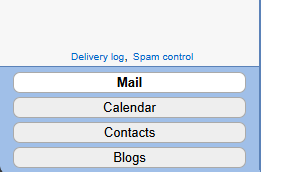
Now, choose the More Actions drop-down and select Import:
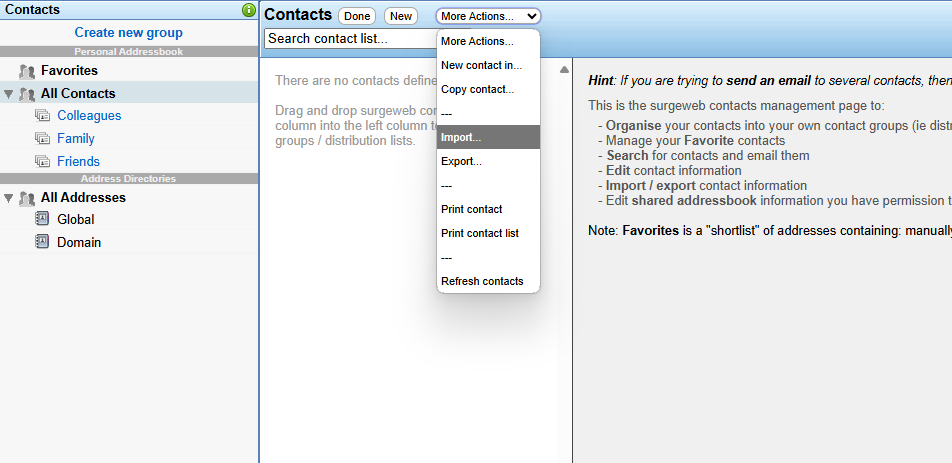
Select vCard file from the left and choose the file you previously exported from IMail.

Now choose Verify Import, and then Apply Import. The contacts migration has now been completed.
Author: Meganet Support
Last update: 2024-11-04 13:51
How can I see the service status of your mail server?
If you suspect there might be an issue with email and want to check if it's on your end or ours, you can check the Meganet Mail Service Status page.
Author: Meganet Support
Last update: 2024-12-12 23:29
What are your mail server settings?
If your email address ends in @meganet.net, @naisp.net, @xpres.net:
Standard:
Incoming mail server: mail.meganet.net
Incoming mail server port: 110 for POP3 or 143 for IMAP (What's the difference?)
Username: youraddress@meganet.net (you MUST use @meganet.net, even if you have @naisp.net or @xpres.net as your email).
Outgoing mail server: mail.meganet.net
Outgoing mail server port: 587 for SMTP
Username: youraddress@meganet.net* (you MUST use @meganet.net, even if you have @naisp.net or @xpres.net as your email).
*Your username and password is required for the outgoing SMTP server (some programs will say it is optional).
Secure (SSL/TLS):
Incoming mail server: mail.meganet.net
Incoming mail server port: 995 for POP3 or 993 for IMAP (What's the difference?)
Username: youraddress@meganet.net (you MUST use @meganet.net, even if you have @naisp.net or @xpres.net as your email).
Outgoing mail server: mail.meganet.net
Outgoing mail server port: 465 for SMTP
Username: youraddress@meganet.net* (you MUST use @meganet.net, even if you have @naisp.net or @xpres.net as your email).
*Your username and password is required for the outgoing SMTP server (some programs will say it is optional).
Author: Meganet Support
Last update: 2024-12-12 23:38
How can I report spam?
Here's how can you can report spam messages:
- If you're connected via IMAP on an email client, you can drag and drop spam messages (or move them) into the 'Spam' folder.
- If you're connected via POP on an email client, users can forward spam to 'isspam@meganet.net'.
- Webmail users can click on the 'Spam' toggle, shown below:

Reporting spam can improve the overall spam scanning capability of the server, improving the email experience for all users.
Author: Meganet Support
Last update: 2024-12-13 16:07
How do I control my spam filter?
Meganet Webmail offers robust controls for managing spam. To access spam settings, click the "spam control" button on the lower portion of the folder pane when logged in:
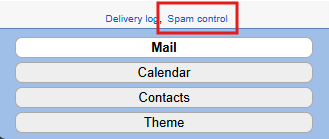
On this page, you will have a number of options related to spam handling, including whitelisting and blocking addresses, viewing your quarantine, and so on. On the Simple tab, you can control how aggressive your spam filter is.
Recommended settings:
Use these settings in the Simple tab for the best control over spam.

Be sure to choose "Place spam in the Spam folder" in the Action section so that these messages are automatically sorted into the Spam folder when suspected as spam.
Author: Meganet Support
Last update: 2024-12-31 14:38
How can I change the look of my Meganet webmail?
Changing the look of your webmail is simple. Once logged in, look for Theme at the bottom of the folder pane:
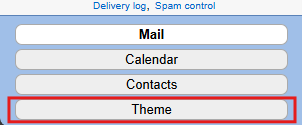
Once selected, the following interface will open from the bottom of the screen:
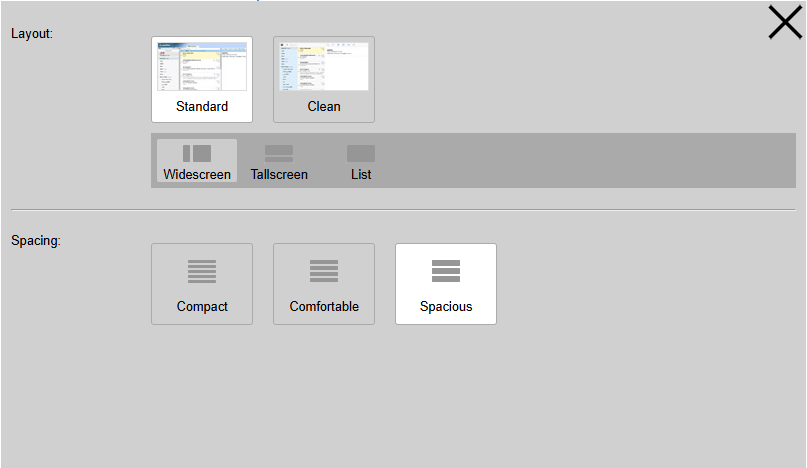
A number of options are available here. Beginning with layout, you will have the additional option of displaying a Clean interface, which looks like this:
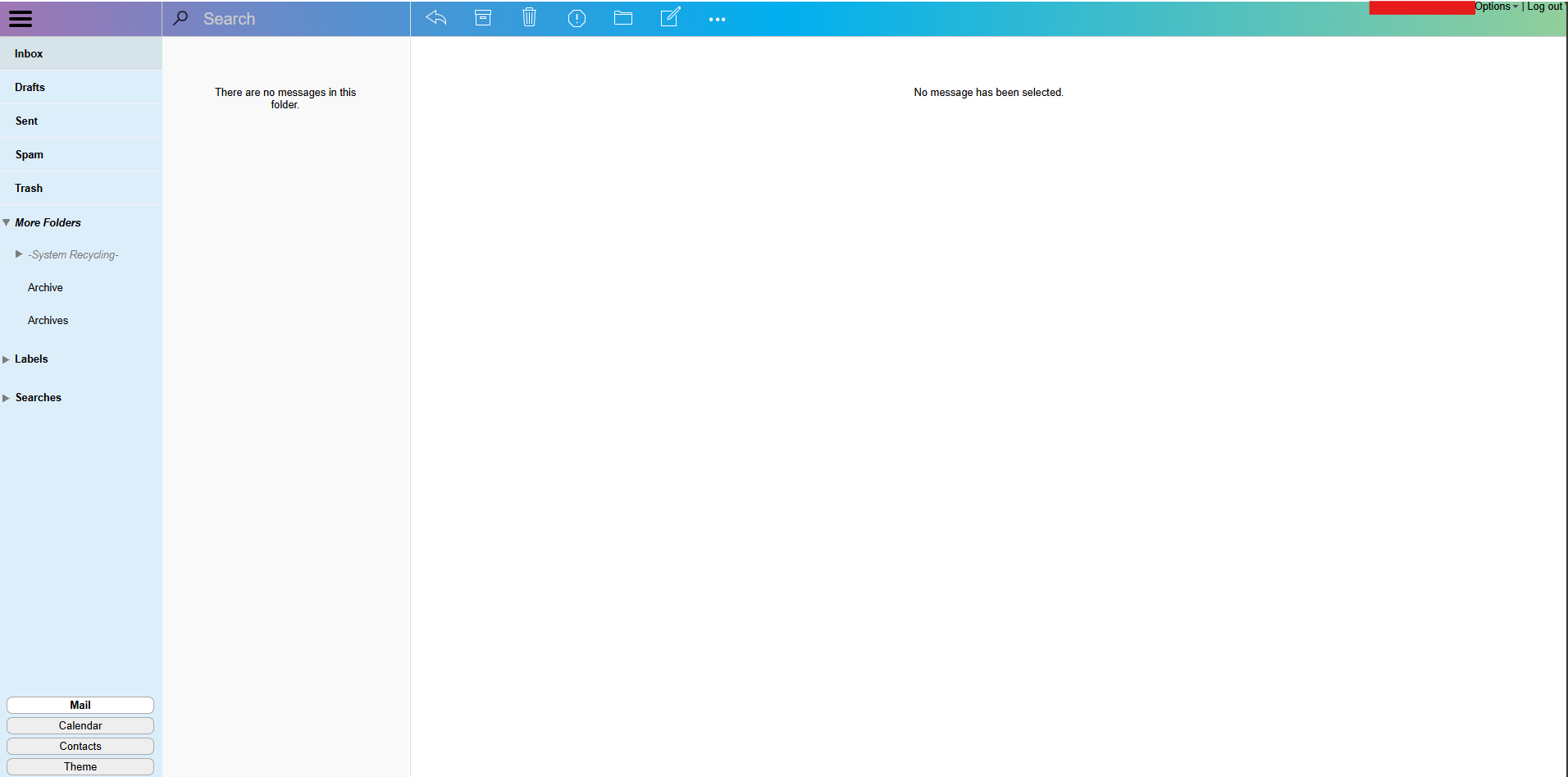
Additionally, you will have the option to display message in Widescreen (displays the messages and message contents in two seperate columns) or Tallscreen, which displays messages in two rows.
Finally, the option is also available to customize the general spacing of items, from Compact to Spacious.
Author: Meganet Support
Last update: 2025-01-02 15:07
How do I empty my Trash folder?
This article assumes that you are using the webmail. If you are not using the webmail, you'll need to consult the documentation for your specific email client.
Once logged into the webmail, look for the trash folder on the left folder pane:
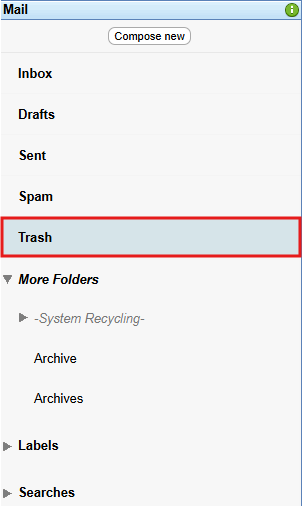
Right click this folder to present the following menu and select the Purge Trash option.
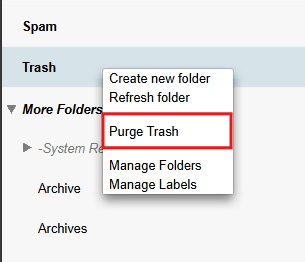
This will empty the folder. Please note that if you have many messages in your Trash folder, the process may take a while.
Author: Meganet Support
Last update: 2025-01-02 15:12
How do I set an autoresponder in webmail?
Once logged into your webmail, look for the options menu in the top-right corner of the screen and select Preferences.
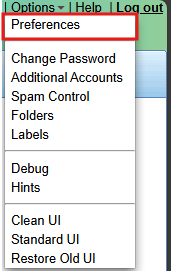
In the preferences page, first select the Filtering tab, then select the Configure button to the immediate right of the Holiday autoresponder row.
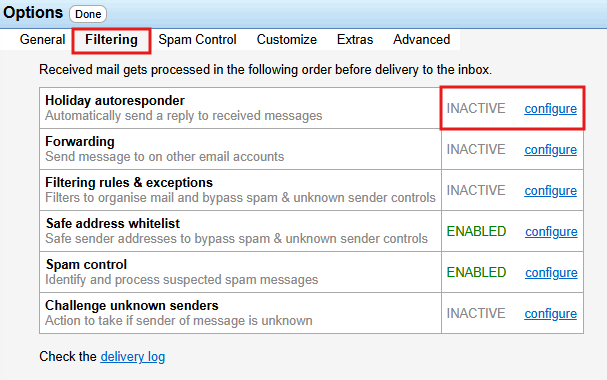
Start by checking off Enable responder when you're ready for the system to begin responding on your behalf. Then enter your message subject and body. You also have additional options here like choosing the enable the responder on the certain date, or having it auto-disable a set number of days after activating. When you're happy with your selections, press the Save button at the bottom of the screen.

Don't forget to come back to this page after returning and unchecking the Enable responder box if you haven't specified the Disable this response after ___ days field.
Author: Meganet Support
Last update: 2025-01-02 15:22
How can I forward my email to another email account?
Once logged into your webmail, look for the options menu in the top-right corner of the screen and select Preferences.

In the preferences page, first select the Filtering tab, then select the Configure button to the immediate right of the Forwarding row.
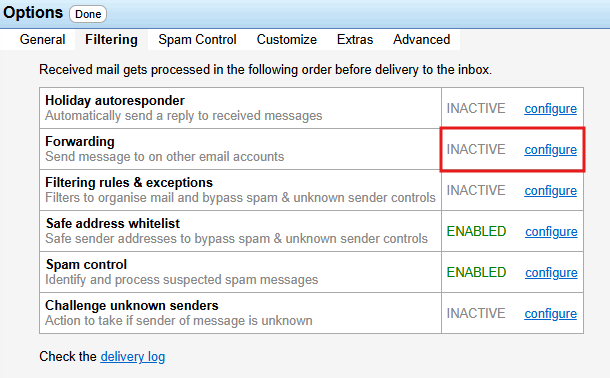
On the subseqent page, you can specify which email account you wish to forward your mail to. You'll have the additional option to Delete original message. This is entirely optional and means that the system will not keep a copy in your Meganet webmail. Instead, it will forward and instantly delete it from webmail.
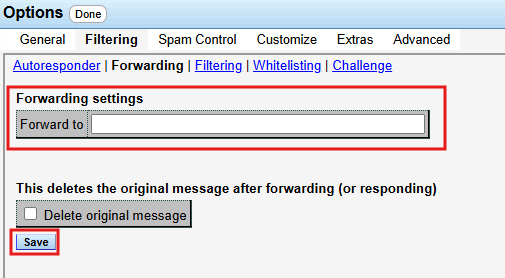
Once done, be sure to press the Save button to confirm your changes.
Author: Meganet Support
Last update: 2025-01-02 15:27
Should I use an email client or webmail?
When deciding how to access your email, you typically have two main choices: using an email client (such as Outlook, Apple Mail, or Thunderbird) or using webmail through your browser. While third-party email clients can be convenient for some users, we strongly recommend using our own webmail service. Below are some key reasons why webmail is the preferred option:
1. Full Support and Easier Troubleshooting
- Dedicated Support: Because our webmail is a product we develop and maintain, we’re able to provide comprehensive support. If you run into any issues, our support team is trained to help you quickly resolve them.
- Limited Third-Party Support: Third-party email clients involve settings and configurations that vary by software version and device, so it’s harder for us to troubleshoot issues on these external platforms.
2. Accessibility Anywhere, Anytime
- No Installation Needed: You can log in to webmail from any computer, tablet, or smartphone using a browser—there’s no separate application or special configuration required.
- Consistent Experience: Regardless of the device or operating system, webmail looks and operates the same, giving you a consistent interface wherever you sign in.
3. Enhanced Security and Reliability
- Server-Side Updates: Because all updates and improvements happen directly on our servers, you don’t have to worry about installing the latest patches or dealing with outdated software.
- Built-in Spam and Virus Protection: Our webmail is optimized with integrated spam filters and virus protection specifically designed for our environment, helping keep your inbox safer.
4. Up-to-Date Features
- Continuous Improvements: We regularly update webmail with new features and enhancements. With a third-party email client, you’re dependent on that software’s release schedule.
- Automatic Bug Fixes: Bug fixes are applied automatically to webmail, whereas you may have to manually update a client or wait for the developer to release a patch.
5. Optimized for Our Environment
- Tailored to Your Account: Our webmail interface is designed to integrate smoothly with our email servers, ensuring the best performance and minimal configuration headaches.
- Reliable Performance: Because the system is hosted on our own servers, we can ensure a stable, high-performing environment that meets our quality standards.
In Summary
While you can certainly use a third-party email client if it suits your workflow, we recommend using our webmail platform for the best overall experience. By doing so, you’ll get dedicated, knowledgeable support, a consistent user experience, and a secure, always up-to-date environment—all without having to configure or update any separate software.
Author: Meganet Support
Last update: 2025-01-02 15:36
Voice
Why does my voice quality sound garbled or choppy?
If your voice sounds garbled or choppy, it’s often related to network issues, configuration problems, or equipment malfunctions. This guide outlines the common causes and solutions for improving voice quality on IP phones.
1. Poor Network Connection
Causes:
- Unstable or Low Bandwidth: IP phones require a consistent and reliable internet connection. If your network speed is too slow or fluctuates, your voice may sound choppy or garbled during calls.
- Network Congestion: Too many devices or heavy data traffic on your network can consume bandwidth, leading to degraded call quality.
- Packet Loss: When data packets are lost or delayed during transmission, the voice quality can become distorted or incomplete.
Solutions:
- Check Your Bandwidth: Ensure that your internet connection meets the minimum requirements for high-quality VoIP calls. Bandwidth should be sufficient to support the number of IP phones in use.
- Limit Network Usage: If possible, reduce non-essential network traffic during calls, especially if there are multiple devices streaming video or downloading large files at the same time.
- Prioritize Voice Traffic: Implement Quality of Service (QoS) settings on your router or switch to prioritize VoIP traffic over other data, ensuring a smoother and more consistent call experience.
- Monitor Packet Loss: Use network monitoring tools to detect and resolve packet loss, which may indicate issues with your connection or network hardware.
2. Network Equipment Issues
Causes:
- Faulty Routers or Switches: Routers and switches that are not optimized for VoIP traffic can lead to poor call quality. Low-quality or outdated equipment may not properly handle voice data.
- Cabling Issues: Damaged or improperly installed Ethernet cables can cause intermittent connectivity, resulting in choppy audio or dropped calls.
- Incorrect VLAN Setup: Virtual LAN (VLAN) configurations can isolate VoIP traffic from other types of data, ensuring higher call quality. If not properly configured, this can lead to poor performance.
Solutions:
- Use VoIP-Optimized Hardware: Make sure your routers and switches are designed to handle VoIP traffic efficiently. Some equipment has specific features, like packet prioritization and enhanced buffering, which improve voice quality.
- Check Cabling: Inspect all Ethernet cables and connections to ensure they are intact and functioning properly. Replace any damaged cables.
- Configure VLAN for VoIP: Set up a dedicated VLAN for VoIP traffic to avoid interference from other data on the network. This helps to maintain high-quality audio by isolating voice packets.
3. Latency and Jitter
Causes:
- High Latency: Latency refers to the delay in transmitting audio from one end of the call to the other. High latency can cause delayed responses and garbled audio.
- Jitter: Jitter occurs when voice packets arrive out of order or at inconsistent intervals, causing audio to sound distorted or choppy.
Solutions:
- Test Network Latency: Use network tools to measure latency between your IP phone and your VoIP provider's server. Ideally, latency should be under 150 milliseconds for optimal call quality.
- Reduce Jitter: Configure Jitter Buffers on your VoIP system to smooth out packet delivery and prevent jitter-related audio problems. This buffer temporarily holds voice packets to ensure they are delivered in the correct order.
- Upgrade Network Infrastructure: If latency or jitter persists, you may need to upgrade your internet service or invest in higher-quality network equipment.
4. Codec Issues
Causes:
- Low-Quality Codec: The codec is the software used to encode and decode voice data. Some codecs offer better voice quality at the expense of bandwidth. Using a low-bitrate codec may result in poorer audio.
- Mismatched Codecs: If your IP phone and VoIP provider are using different codecs, it can result in audio problems.
Solutions:
- Use High-Quality Codecs: Ensure your IP phone system is configured to use high-quality codecs such as G.711, which provides uncompressed audio at the expense of more bandwidth, but offers excellent sound quality.
- Check Codec Compatibility: Verify that both your IP phone system and VoIP provider are using compatible codecs for optimal performance.
5. ISP-Related Issues
Causes:
- ISP Throttling: Some internet service providers may throttle VoIP traffic, especially if they detect high usage, leading to reduced call quality.
- Local Network Outages: Problems with your ISP’s infrastructure can cause temporary drops in voice quality or connectivity.
Solutions:
- Contact Your ISP: If you're consistently having issues with voice quality, contact your ISP to check for any throttling or network issues on their end.
- Switch ISPs: If necessary, consider switching to an ISP that offers better support for VoIP traffic.
Garbled or choppy voice quality on IP phones is typically the result of network or hardware issues. By optimizing your network, prioritizing VoIP traffic, and ensuring you are using the right equipment and configurations, you can significantly improve the clarity and consistency of your calls. If problems persist, consult with your VoIP provider or network specialist for further assistance.
Author: Meganet Support
Last update: 2024-10-22 14:09
















